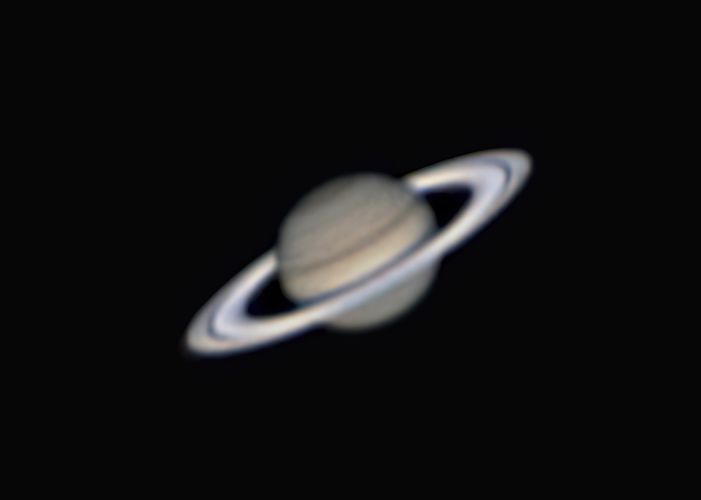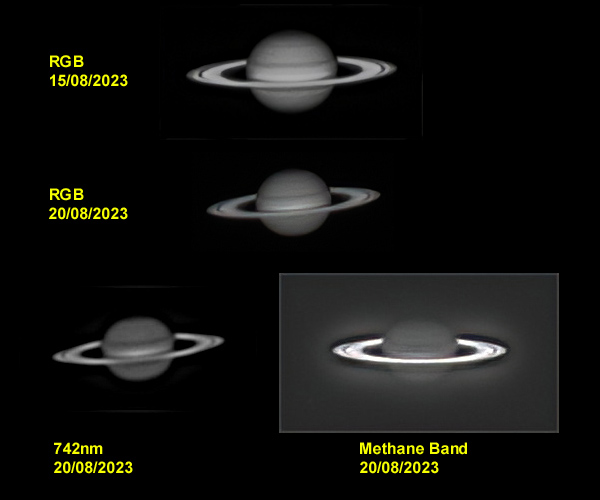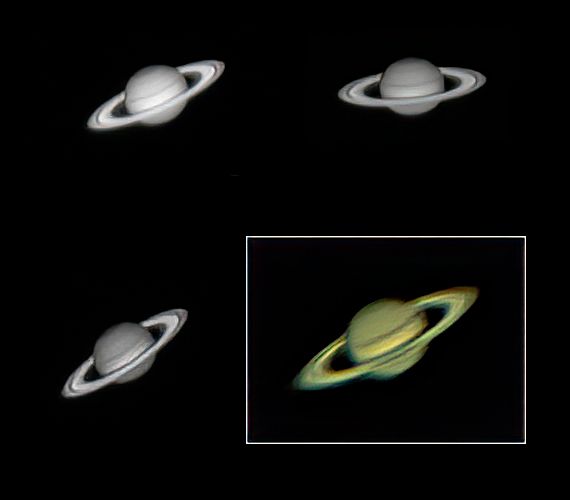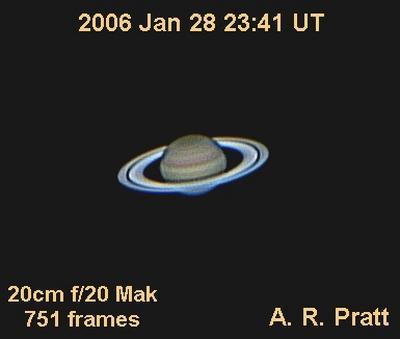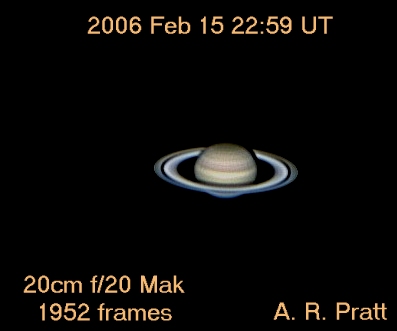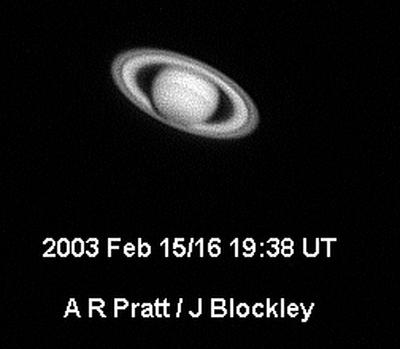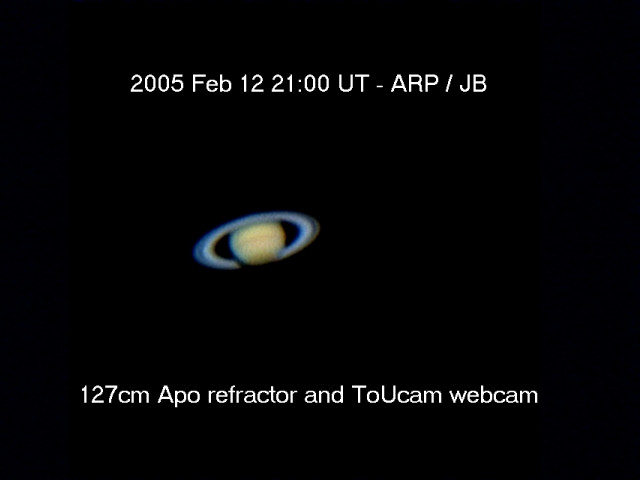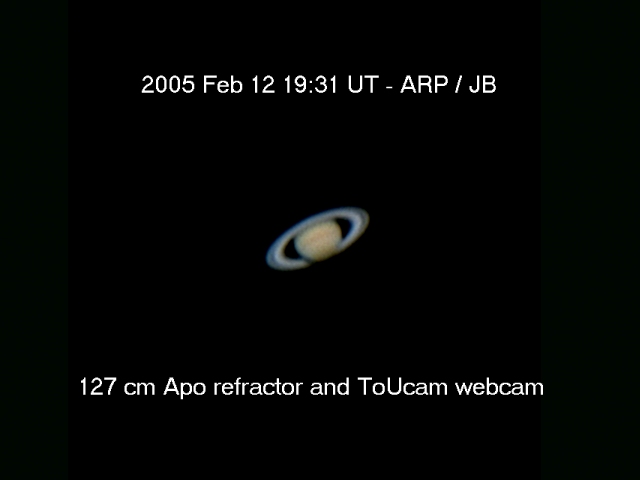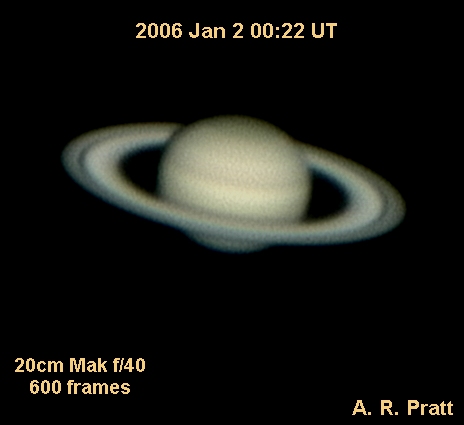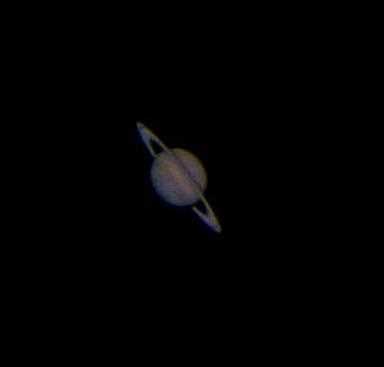Information...
Saturn is the sixth planet from the Sun and like Jupiter is a gas-giant, with a mass of 30% of Jupiter or 95.2 × that of the Earth. It has a radius of about 9 × that of the Earth and has the lowest density of any in the Solar system, being only 70% the density of water.
The prominent ring structure, which on a good night is visible in even small 100mm aperture scopes, is probably one of the most impressive sights for first time astronomers. The ring system is mostly comprised of ice particles, with small amounts of rocky material and dust. They extend from 6,630 to 120,700 km from the planet and have an average thickness of about 20 metres. At least 82 moons orbit Saturn and the tidal interactions help to maintain them.
The pale yellow colour of the planet is due to ammonia crystals in its upper atmosphere, with wind speeds of up to 1,100 miles/hour. Beneath the clouds, it's thought that the planet has a core of iron-nickel surrounded by a deep layer of metallic hydrogen and a layer of liquid hydrogen & helium. Like Jupiter the planet has a very fast rotation rate (10.7 hours at the equator), but the banding in the atmosphere is not as conspicuous from Earth.
For much more detailed information on Saturn see the Wikipedia entry.
